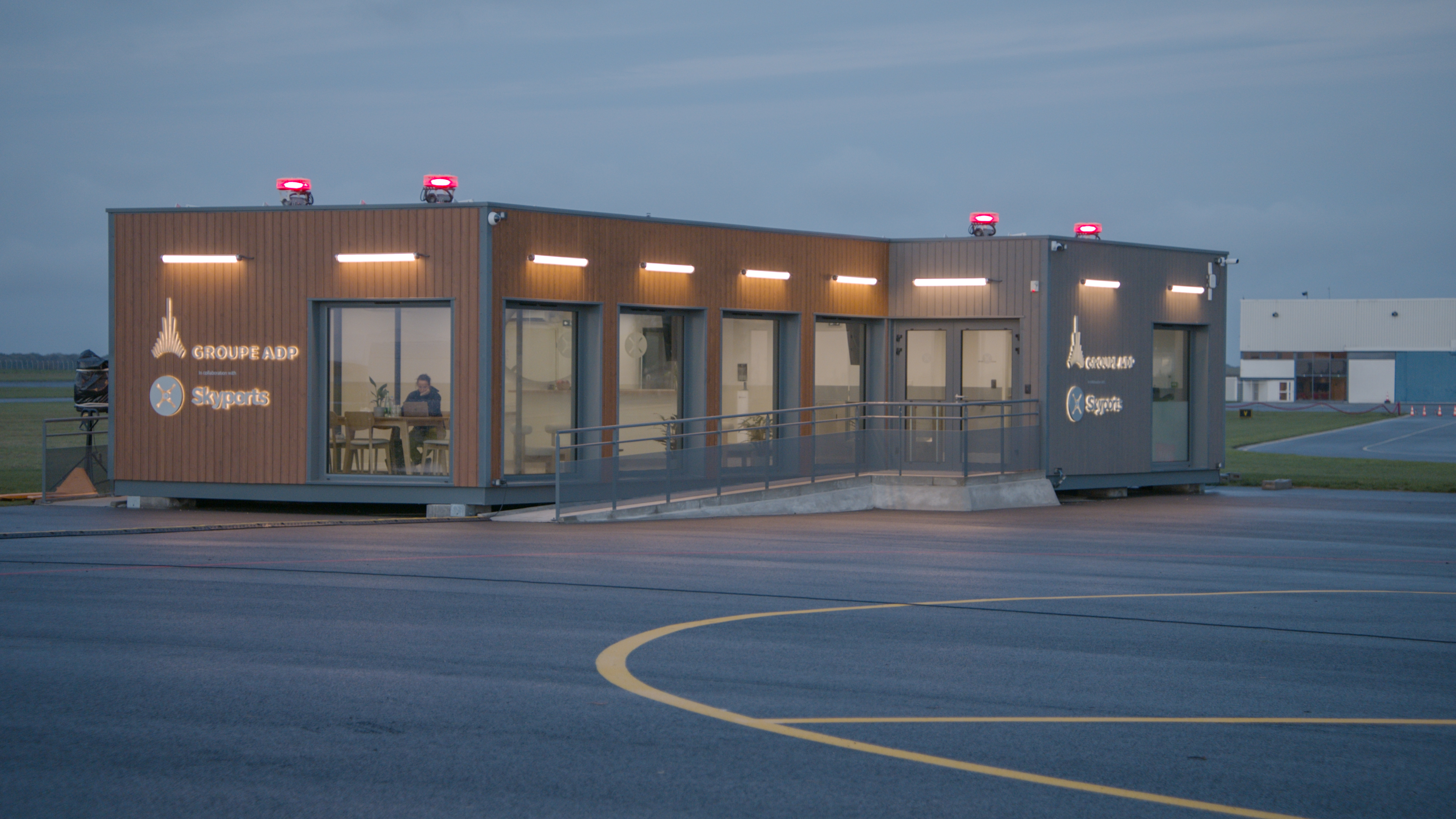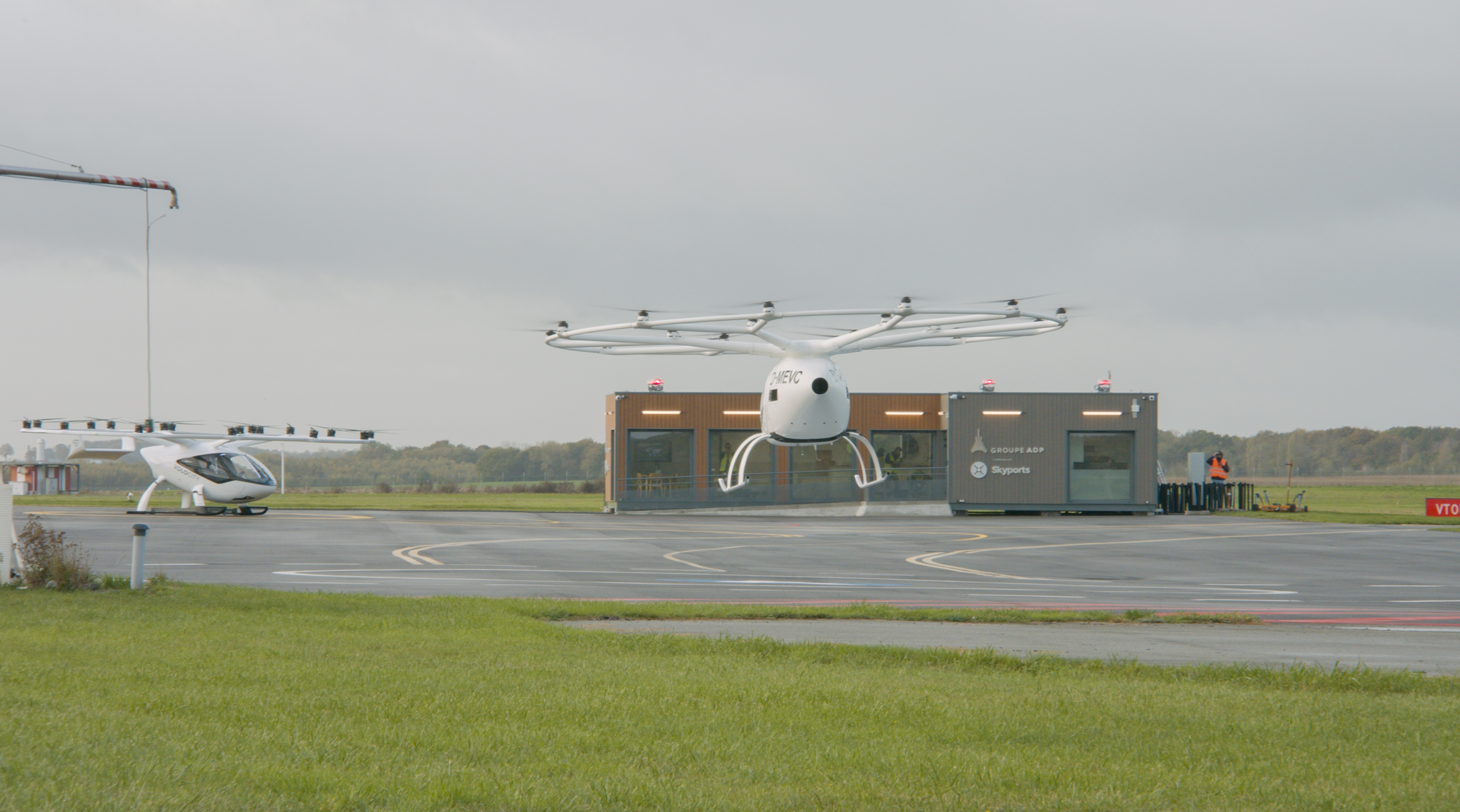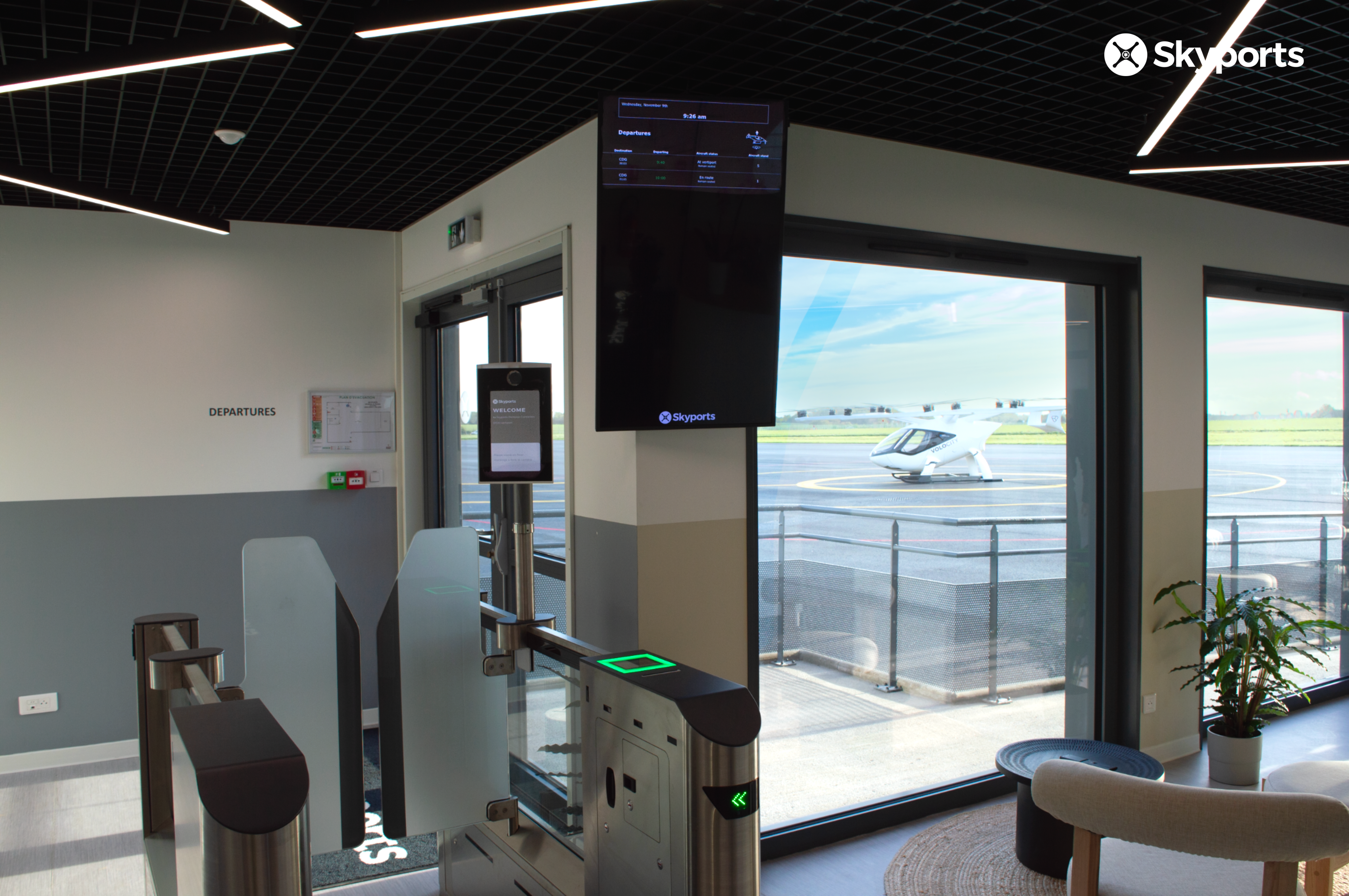A proving ground for vertiport operations: Real-life data collection at Skyports Infrastructure’s European vertiport testbed
The Skyports Infrastructure European vertiport testbed is an invaluable resource for our business. The facility is the only permanent testing site in Europe for developing advanced air mobility (AAM) processes and operations. Since its launch in November 2022, Skyports Infrastructure completed numerous testing campaigns at the facility which have served to advance our industry knowledge and develop our physical and digital vertiport products.
Testing at the facility, located at the Groupe ADP-owned Pontoise-Cormeilles airfield, 25km northwest of Paris, has generated valuable findings for Skyports Infrastructure and our various partners, and is used regularly for demonstrations and research for our ongoing projects.
One such project is the Advanced Mobility Ecosystem Consortium (AMEC), the UK government’s flagship advanced air mobility project, part funded by UK Research and Innovation Future Flight Challenge programme. AMEC brings together leading experts spanning the breadth of UK aviation and innovation to develop and demonstrate end-to-end operations to help drive the development of a commercially viable AAM network in the UK. Alongside a long list of aviation partners, including AtkinsRealis, Vertical Aerospace, Virgin Atlantic, Heathrow Airport, NATS, Connected Places Catapult and Cranfield University, Skyports Infrastructure is developing a vertiport from where eVTOL flight tests and ground-based experimentation and testing will be conducted.

Real data for real operations
In Autumn this year a team comprising Skyports Infrastructure vertiport planners and operations and technology specialists were joined by Cranfield University partners at the Skyports Infrastructure European vertiport testbed site.
The aim of the two-day testing campaign was to capture never-before-recorded, real experimental data of vertiport processes to provide accurate results and inputs for modelling and development of operations. The Pontoise-Cormeilles facility enables us to test out and prove our vertiport operational assumptions in a true-to-life setting in preparation for commercial launch. While assumptions and forecasts can be effective for testing certain scenarios, it’s through real-life testing that we get the most accurate results and can prove the safety case ahead of day one eVTOL operations. Over time, we continue build our database of experience and real-life data, whether through work at our testbeds or through daily live operations at Skyports London Heliport.
The experimental programme with Cranfield University focused on the following:
- Passenger walking speed: Understand how long it takes for individual passengers to transit through vertiports and/or walk across the airfield, including dozens of potential passenger characteristics e.g., a mobility-impaired person with a crutch, a mother with an infant and an experienced business traveller
- Check-in process: Understand the duration of checking a ticket, confirming identity and capturing weight of the passenger
- Security: Sketch out conceivable security scenarios and estimate their minimum, maximum and average duration
- Luggage: Track the time needed to load and unload luggage of an individual passenger or a group of passengers
- Pre-flight: Estimate the duration of pre-flight checks and determine their position in the sequence of processes

Terminal learning
What resulted is a rich list of almost 100 datapoints which capture a huge range of scenarios. This data will be used for two purposes. First, we will validate – and challenge – our current assumptions. Second, the data will inform mathematical distributions which we will then feed into our vertiport simulations.
Early assessment of the campaign has confirmed that security will be a key driver of how long a passenger is required to dwell within the terminal. The finding itself is not unexpected – it is consistent with existing assumptions and learnings from commercial aviation. The value lies in our ability to confirm this assumption in a real-life setting so that we can confidently base future operational planning and process development off it. Another result we extracted is the average walking speed of passengers of 1.3 metres per second, with carry-on luggage having surprisingly little impact on this value.
We are excited about these new insights, but we are also aware that this is just the beginning. We will be conducting future testing campaigns to test critical vertiport operations, including boarding processes and push-back procedures. As the launch of commercial operations draws nearer, we remain committed to the testing that will enable our goal of improving the movement of good and people through a network of vertiports.
